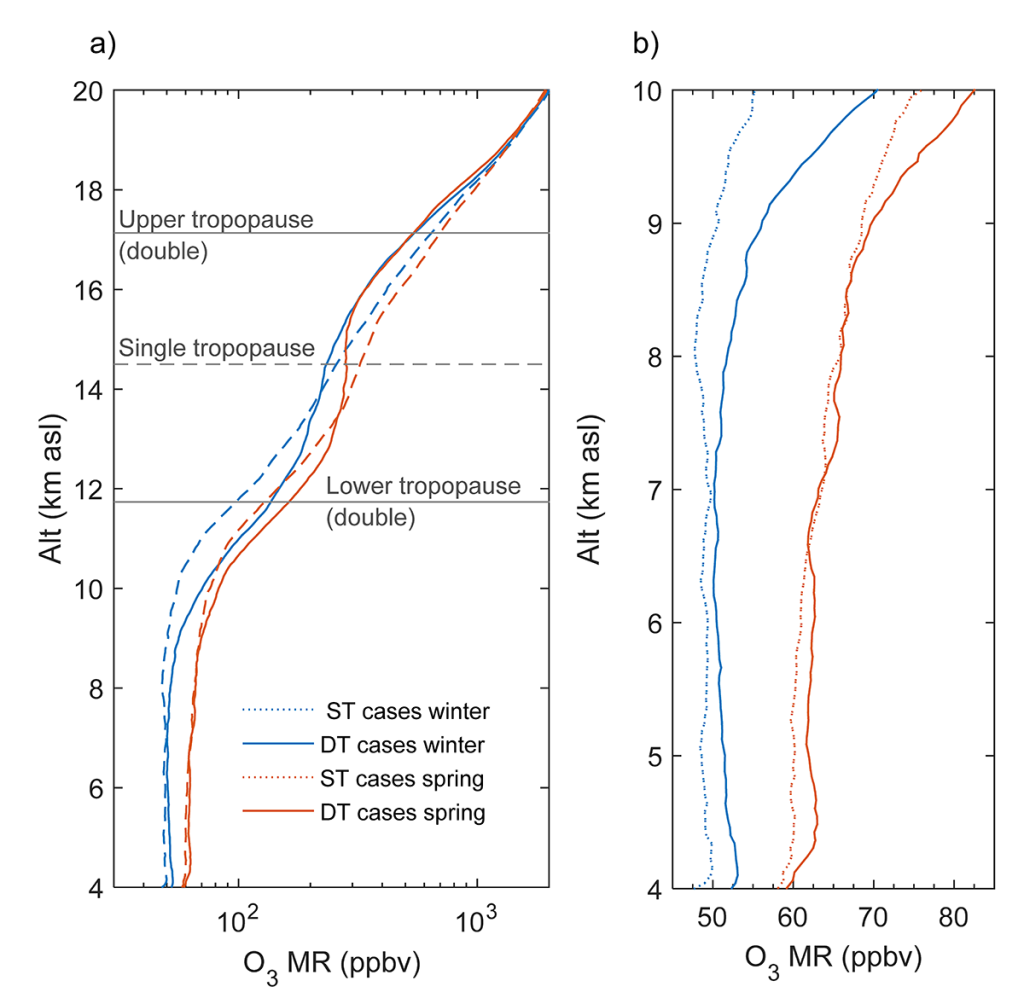Tropospheric ozone is an important greenhouse gas and an air pollutant impacting human health and vegetation. Recent studies highlight the importance of increasing the number of tropospheric ozone profiling stations and long-term measurements to fully understand its sources and variability. The NDACC station of JPL-Table Mountain Facility (TMF, elev. 2285 m, California) has been operating a tropospheric ozone DIAL system since 1999, thus providing high vertical resolution profiles of ozone throughout the troposphere and lower stratosphere (3-24 km). Measurements are performed 3-5 days a week typically during two hours at nighttime. Surface ozone measurements complement the lidar profiles since 2013.
Results from the combined analysis of the surface and tropospheric ozone lidar profiles have been recently submitted to the NDACC 25th Anniversary Special Issue of Atmospheric Chemistry and Physics (doi:10.5194/acp-2016-70). The study reveals that ozone at the surface is typical of free tropospheric background conditions with small amplitude of the seasonal and diurnal cycles and high ozone values, compared to neighboring stations affected by the Los Angeles urban boundary layer conditions. The lidar observations show that the seasonal cycle observed at the surface, with maxima in spring and summer, extends throughout the free-troposphere.
Trend analysis of the lidar data reveals a statistically significant positive trend of 0.31 ppbv.year-1 in the free troposphere for the period 2000-2015. To identify the causes of this trend, a classification of the air parcels sampled by lidar was performed using backward trajectories. This classification reveals the dominant influence of the Eastern and Central Pacific Ocean, with air parcels of low ozone content (50-65 ppbv). In summer, enhanced ozone values (70 ppbv) are found in air parcels originating from Central America, which can be interpreted as local production by NOx due to enhanced thunderstorm activity during the North American Monsoon. Finally, in winter and spring, significant influence of the stratosphere leading to ozone values of 65-80 ppbv down to 8-9 km is also observed.
Due to the position of TMF with respect to the subtropical jet, stratospheric influence is easily identified during the frequent tropopause folds found in the vicinity of the site (27% of the time, mostly in winter and spring). A dual vertical structure in ozone is observed within the fold layer, with lower-than-averaged values in the top half of the fold (14-18 km), and higher-than-average values in the bottom half of the fold (12-14 km). This influence extends down to the lower troposphere, with an average ozone increase of 2 ppbv in cases of tropopause folds compared to non-tropopause fold days.
The study concludes that the quantitative impact of stratosphere-troposphere exchange cannot be ignored in tropospheric ozone studies, especially in view of the frequency of occurrence of tropopause folds. The current study will therefore be extended to quantify the impact of the tropopause folds in the observed tropospheric ozone interannual variability and trends.

Reference: Granados-Muñoz, M. J. and Leblanc, T.: Tropospheric Ozone Seasonal and Long-term Variability as seen by lidar and surface measurements at the JPL-Table Mountain Facility, California, Atmos. Chem. Phys. Discuss., doi:10.5194/acp-2016-70, in review, 2016.
Copyright 2016 California Institute of Technology. U.S. Government.